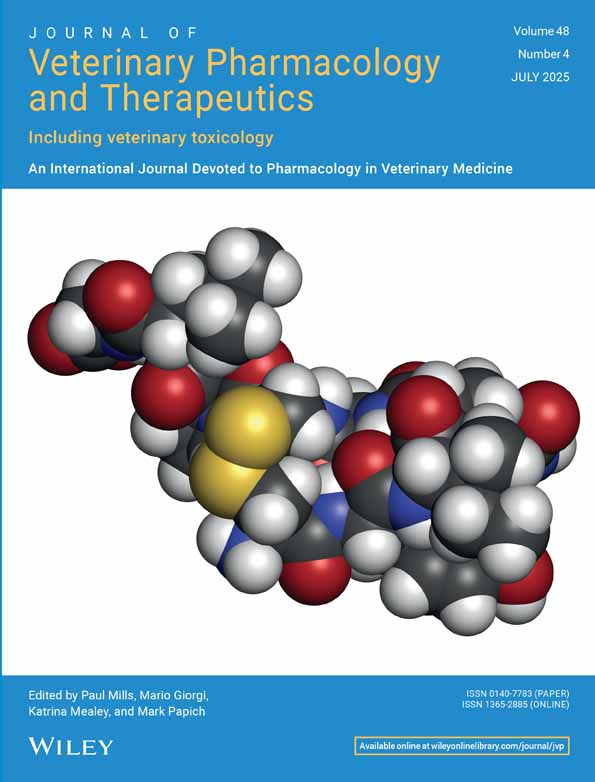The effects of experimentally induced bronchopneumonia on the pharmacokinetics and tissue depletion of gentamicin in healthy and pneumonic calves
Abstract
The effects of a bovine bronchopneumonia model on the pharmacokinetics and tissue residue depletion profiles of gentamicin in calves weighing 90-140 kg was explored. Two groups of heifer calves were used. The first was a normal group, while the second group had bronchopneumonia induced. A scoring system was developed to evaluate the extent of disease in the groups. A bimodal distribution of the serum pharmacokinetic parameters in the pneumonic group was caused by the effects of dehydration. When the severely dehydrated calves were omitted from the analysis, serum clearance of gentamicin was significantly higher in the pneumonic group than in the normal group (P < 0.05). The pharmacokinetic equations used to fit the tissue concentrations varied from tissue to tissue and between groups. Because the best equation of a particular tissue's concentrations varied between groups, withdrawal periods, which are normally determined in healthy animals, may be inappropriate in diseased animals. Addition of several parameters (serum creatinine, serum urea nitrogen, albumin, fibrinogen, and total protein concentrations, white blood cell counts, central iluid volume, volume of distribution at steady state, area under the serum concentration vs time curve, serum clearance, and elimination rate constant) to these tissue-depletion models using multiple regression improved the prediction of a concentration in a given tissue.




